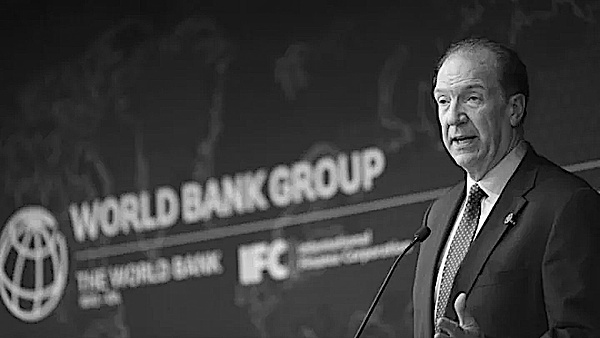Reducing the Fed's Influence: Warsh criticized the Fed's large balance sheet and its role in financing deficits through quantitative easing. He advocated reducing its size and focusing on core monetary policy. Tighter Inflation Targeting: Warsh proposed setting a fixed inflation target of 1-2% or following a Taylor rule, abandoning the Fed’s current flexible, data-dependent approach. Regulatory Reform: He called for curbing the Fed’s regulatory excesses (such as its ESG mandate) and prioritizing monetary stability over social goals. Potential Benefits: Fiscal Discipline: Reducing quantitative easing could force Congress to address the $2 trillion annual deficit (7% of GDP, CBO 2025 estimate), stabilizing long-term debt dynamics. Market Stability: An explicit 1-2% inflation target anchors expectations and reduces volatility. The Taylor Rule, which links interest rates to inflation and the output gap, provides predictable policy. Reducing Wealth Inequality: Shrinking the Fed's balance sheet could mitigate wealth inequality driven by quantitative easing, as QE has helped the net worth of the top 1% (growing 300% since 2008) far outpace GDP growth (80%). Risks and Challenges: Reducing the Fed's role could tighten credit conditions and slow growth. Since 2008, private bank credit creation has fallen 20% relative to GDP, and QE has filled this gap. Without QE, small and medium-sized businesses and consumers would likely face higher borrowing costs. Deficit Financing Issues: The Fed's reduction in Treasury bond purchases could push up yields, increasing debt servicing costs. A 1% increase in the 10-year Treasury yield could increase annual interest payments by $300 billion in 2025 (according to Treasury data). Policy Conflicts: Warsh's call for lower interest rates to stimulate growth conflicts with his goal of shrinking the Fed, as lower rates typically require quantitative easing or yield curve control, which expands the balance sheet. The Shadow Fed and the Political Context: Trump's drafting of a letter in 2025 proposing the dismissal of Federal Reserve Chairman Jerome Powell underscored the immense political pressure for reform. The concept of a "shadow Fed"—the preemptive announcement of a new chair to signal a policy shift—could influence markets in advance. Markets reacted sharply to the Powell news, with the dollar falling 2%, 10-year Treasury yields rising 50 basis points, and stocks falling 3% (Bloomberg, July 17, 2025). Although the administration subsequently withdrew, Powell's term ends in May 2026, paving the way for a new chair to implement reforms. Malpass and Warsh's ideas resonate with the structural changes described by Strauss and Howe as the "Fourth Turning." Following World War II, the 1951 Federal Reserve-Treasury Agreement granted the Fed independence, but current proposals for yield curve control or large-scale quantitative easing could reverse that, echoing the Fed's policy of suppressing yields in the 1940s to finance war bonds. Malpass and Warsh aim to address the silent depression, but their proposals are inherently conflicting: Quantitative Easing vs. a Smaller Fed: Lowering interest rates to stimulate growth would require quantitative easing or yield curve control, which would expand the Fed’s balance sheet and conflict with Warsh’s goal of a smaller Fed. Quantitative easing also exacerbates wealth inequality: Since 2008, the net worth of the top 1% has grown three times faster than GDP. Inflation and Wage Growth: High nominal growth can trigger inflation, which, unless managed properly, could erode wage growth. After World War II, real GDP grew at an average annual rate of 4%, with wage growth outpacing inflation. Low productivity today (1.5% annually in 2025, according to BEA data) makes this more difficult. Market Stability and Reform: Forcing yields below nominal growth could trigger market turmoil as bondholders demand higher returns. Powell's trial balloon in 2025 demonstrates the market's sensitivity to Fed uncertainty. Opinion: Necessary but Risky Reforms Malpass and Warsh's proposals are a welcome shift from the Fed's focus on inflation and financial market technicalities. Targeting real wages and small and medium-sized businesses could address the plight of the middle class, reversing a quarter-century of declining purchasing power and a K-shaped economy. However, the risks are significant. Quantitative easing-driven growth disproportionately benefits the wealthy, and suppressing bond yields could trigger inflation or market instability. America's structural weaknesses—trade deficits, low productivity, and excessive financialization—limit the relevance of the post-World War II model. A balanced approach could include: A mixed mandate: combining an inflation target of 1-2% with a real wage growth target to ensure that policies benefit workers without undermining price stability. Targeted quantitative easing: limiting quantitative easing to credit instruments for small and medium-sized enterprises to minimize asset price inflation while supporting the real economy. Fiscal Coordination: Address structural constraints by combining Fed reforms with fiscal policies that boost productivity (e.g., infrastructure investment) and reduce deficits. If poorly implemented, these reforms could exacerbate inequality or inflation, but inaction would deepen the silent depression. The Fed must evolve to prioritize the middle class, but navigating the trade-offs will be a daunting challenge.
Conclusion
Malpass and Warsh offer a bold vision for reforming the Federal Reserve to address the impact of the silent depression on the middle class. Their focus on real wages, support for small and medium-sized businesses, and a leaner Fed could restore economic fairness, but inflation, market volatility, and structural constraints pose significant risks. With Powell's term ending in 2026 and the United States approaching a potential turning point, the next Fed Chair will face a delicate balancing act. The path forward requires innovative policies, fiscal discipline, and a commitment to forgotten American workers—otherwise, the silent depression will deepen.
 Weatherly
Weatherly





